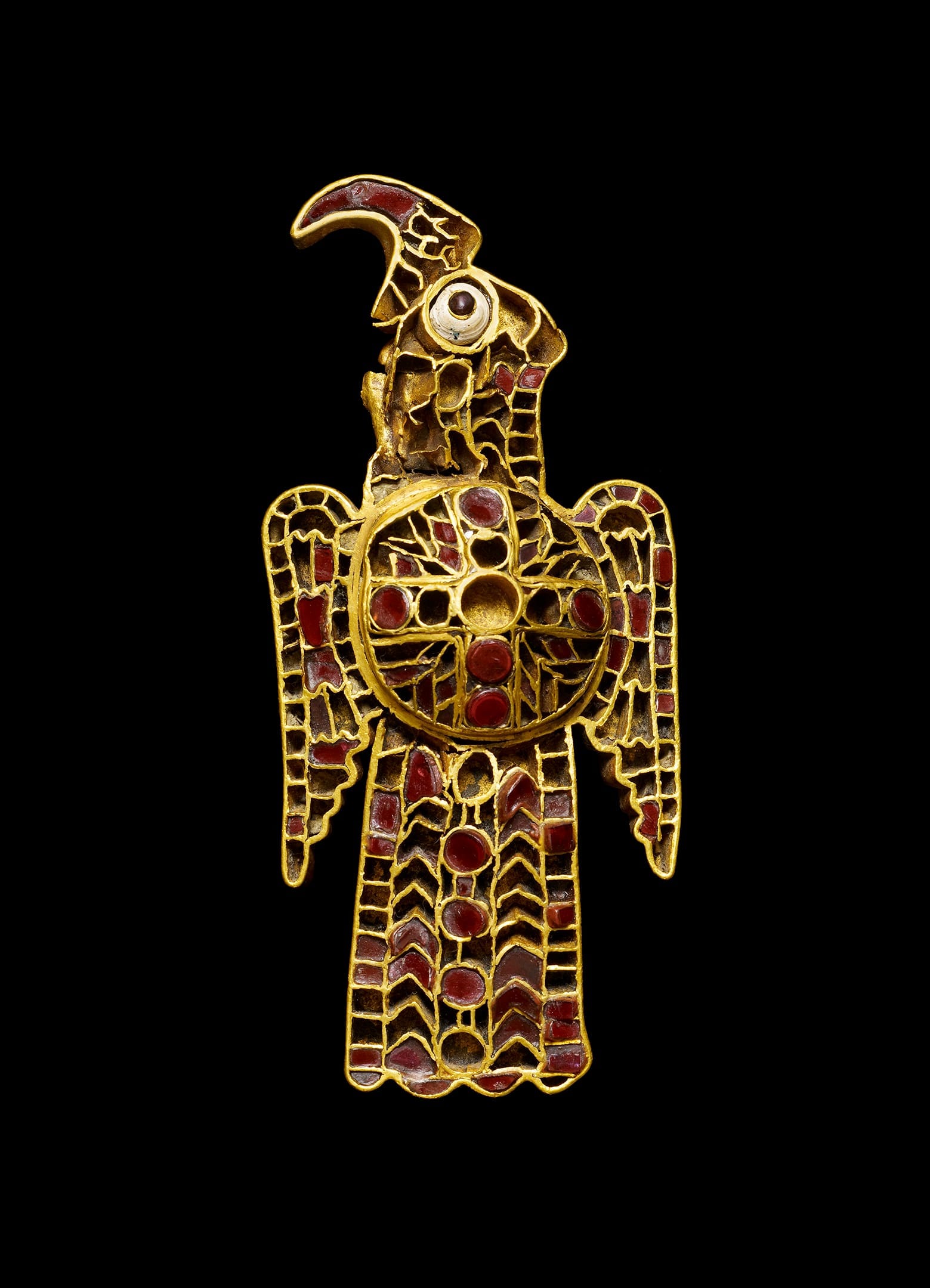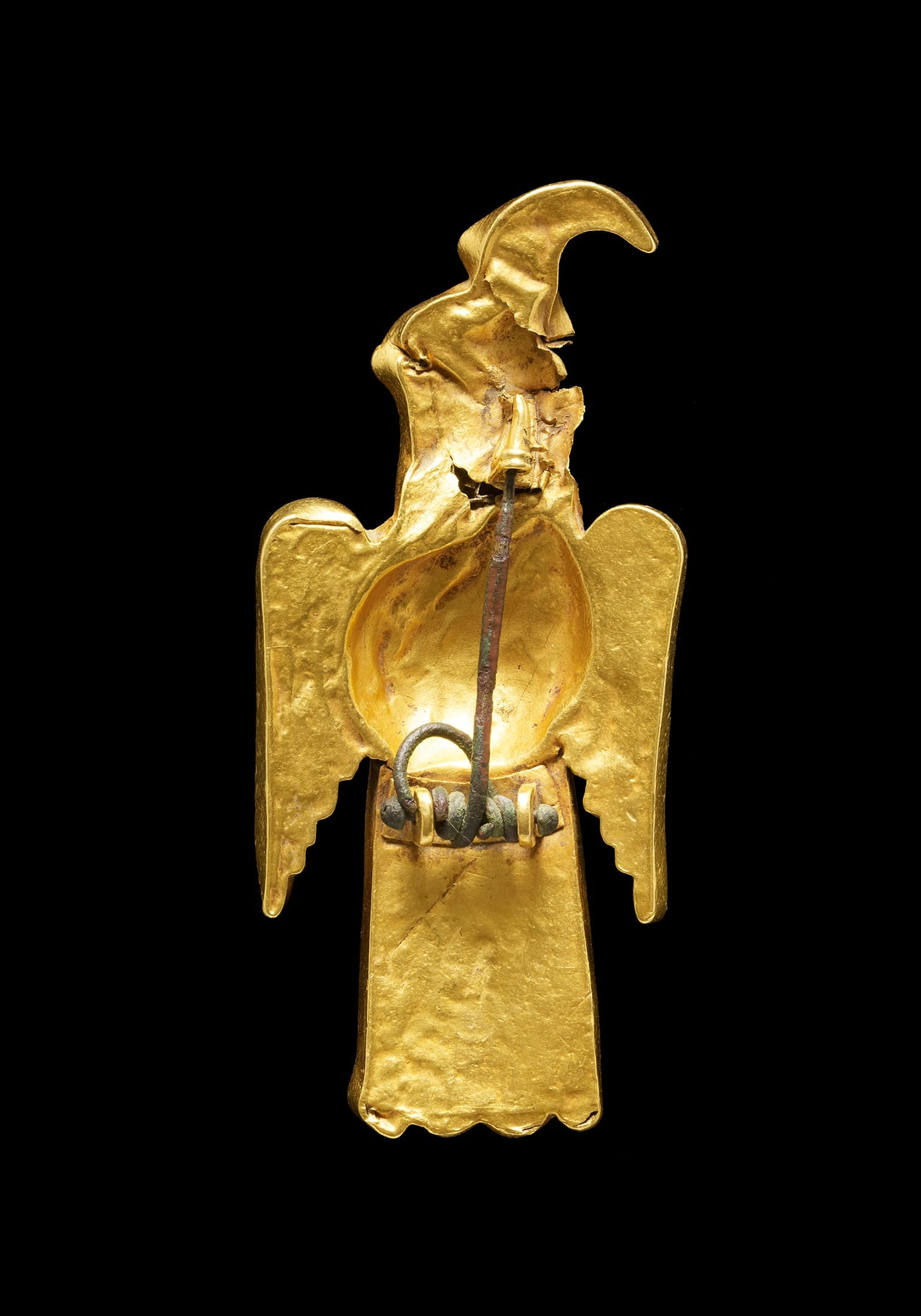An iconic image of the period of “barbarian invasions”, the Domagnano fibula is an exceptional piece in the Louvre Abu Dhabi collections. In a shimmer of gold and garnets from Gujarat in India, this sumptuous item of jewellery combines the ancient symbol of power of the eagle with the cross of the new Christian era. Dated at the end of the 5th century, it is probably contemporary with the fall of the last Roman emperor of the West and epitomises the rich and complex period that saw the meeting of ancient, barbarian and Christian traditions.
This luxurious fibula, originally worn with its symmetrical counterpart on the shoulder of a woman’s robe, is in the majestic form of a bird of prey, probably a falcon, represented in full flight or perched on the hand of its owner. A circular medallion has a cross-shaped motif in the centre. The fibula illustrates the introduction of the new technique of cloisonné jewellery, a process imported from the areas north of the Black Sea by eastern Germanic peoples, possibly the Huns, whereby semi-precious stones and materials are inlaid in compartments made by soldering gold wires (more than 220 here) onto a flat piece of gold.


